Images of Fourknocks Megalithic Passage Tomb
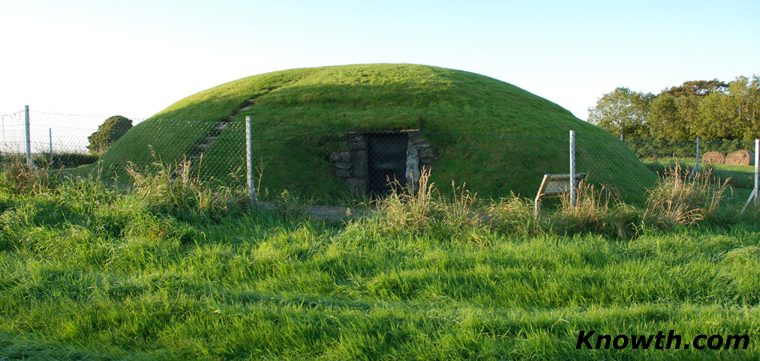
Fourknocks Passage Tomb - front view
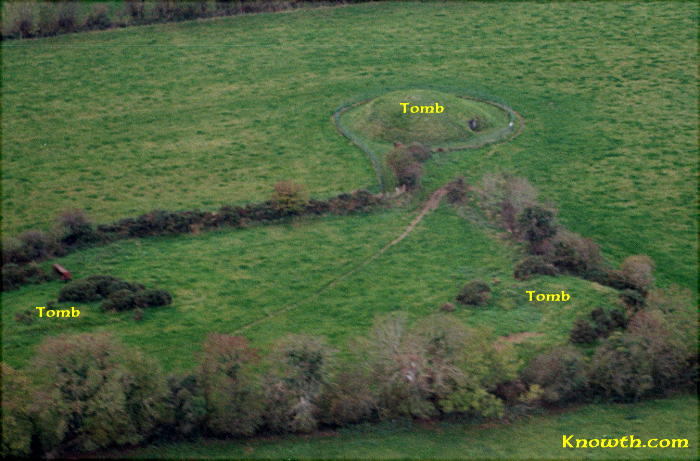
Fourknocks - main mound and two unexcavated tombs
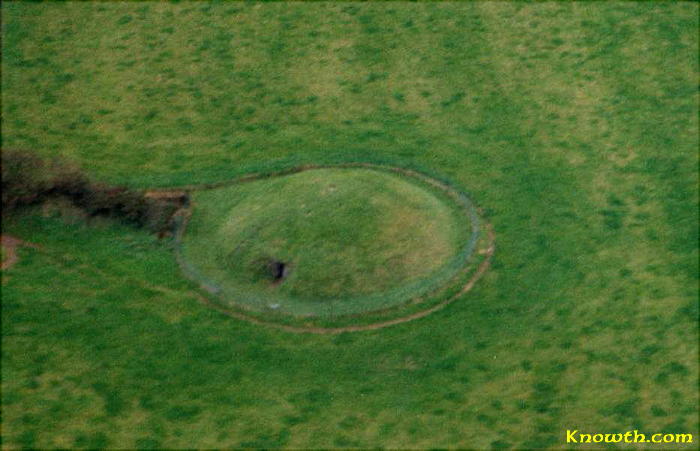
Fourknocks aerial view
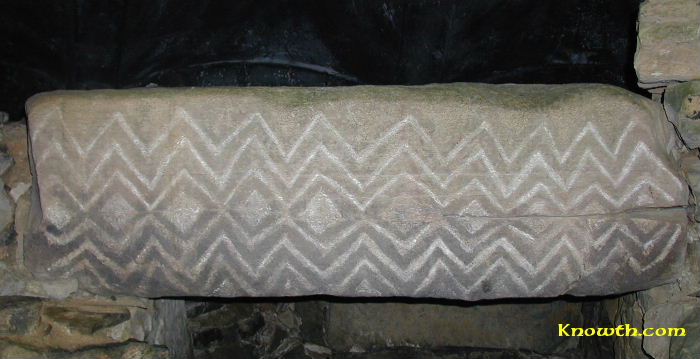
Lintel stone over western recess - Fourknocks 140cm x 50cm
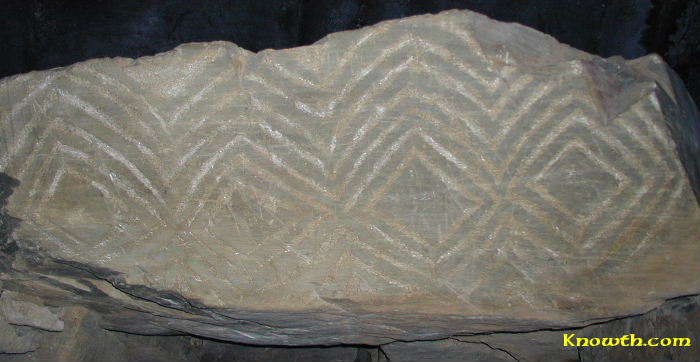
Lintel stone over southern recess - Fourknocks 130cm x 50cm
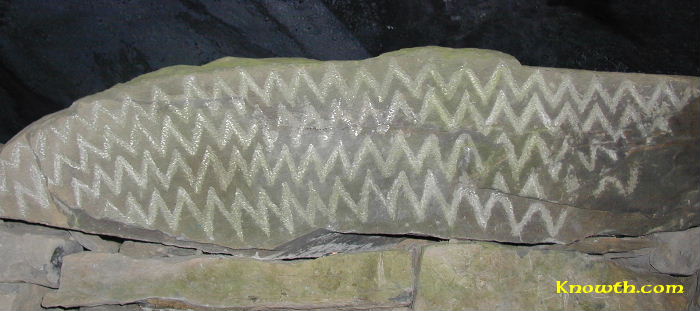
Decorated stone in the Fourknocks chamber, west of the entrance - 160cm x 30cm
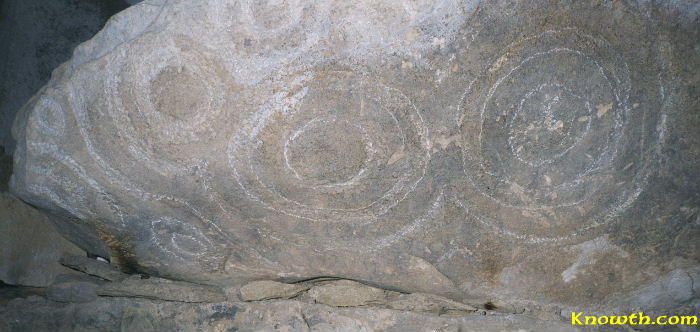
Decorated stone in the chamber east of the entrance - 90cm x 50cm
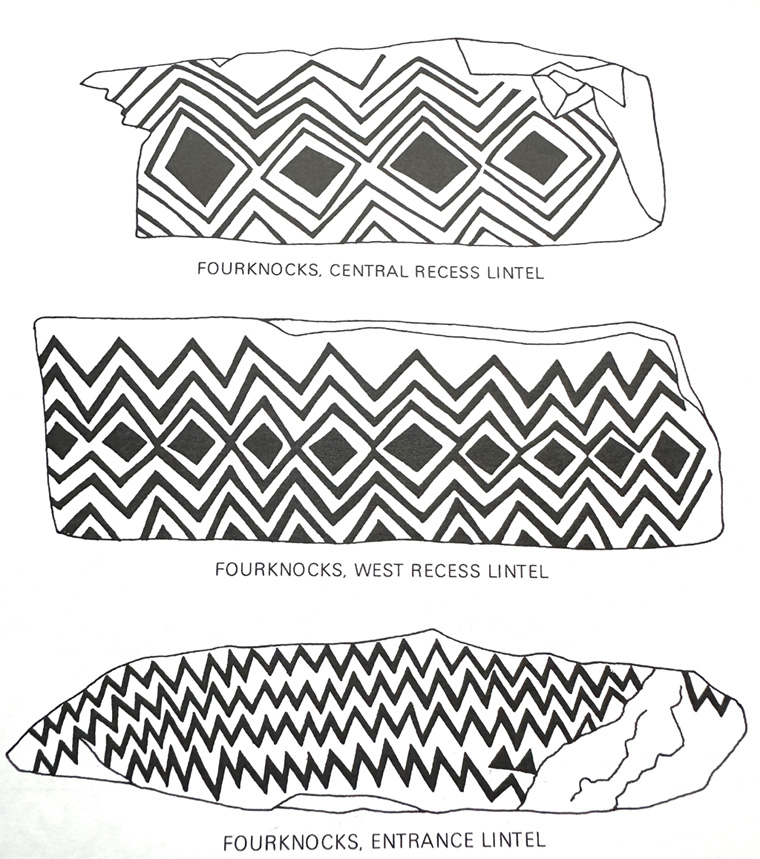
Megalithic Art at Fourknocks illustrated by Martin Brennan
Fourknocks Passage Tomb - an intimate site.
There is no visitors centre and often no one else around to disturb the peaceful atmosphere. Spend as long as you want inside the chamber, studying the wonderful megalithic art or in quiet meditation. The engraving of a human face and torso on a stone in the chamber is one of the oldest anthropomorphic representations in Ireland.Fourknocks was constructed about 5,000 years ago and is contemporary to Newgrange and the other passage tombs in the Boyne Valley. It is located 16km (10 miles) southeast of Newgrange. The name Fourknocks is from the Irish Fuair Cnocs meaning Cold Hills.
Fourknocks has a short passage leading into a wide pear shaped chamber with three smaller offset chambers. The original roof was probably a wooden structure supported by a central pole. The current concrete roof was constructed in 1952 at the end of a two year excavation. Fragments of 65 burials were found in the tomb, both cremated and unburnt remains of adults and children. Decorated Pottery and Vessels and personal ornaments including pendants and beads were also found. All of the items found were moved to the National Museum.
The entrance to Fourknocks is too far north to have a solar alignment, however the Fourknocks mound is aligned with the path of Winter Solstice sunrise towards Newgrange. During the stone age the passage at Fourknocks was aligned with the helical rising of the "W" shaped constellation of Cassiopeia, perhaps this accounts for the dominance of W shaped zig zag megalithic art at Fourknocks.
Boyne Valley Private Day Tour
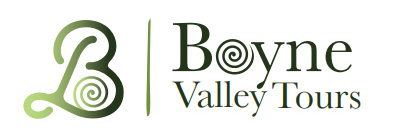 Immerse yourself in the rich heritage and culture of the Boyne Valley with our full-day private tours.
Visit Newgrange World Heritage site, explore the Hill of Slane, where Saint Patrick famously lit the Paschal fire.
Discover the Hill of Tara, the ancient seat of power for the High Kings of Ireland.
Book Now
Immerse yourself in the rich heritage and culture of the Boyne Valley with our full-day private tours.
Visit Newgrange World Heritage site, explore the Hill of Slane, where Saint Patrick famously lit the Paschal fire.
Discover the Hill of Tara, the ancient seat of power for the High Kings of Ireland.
Book Now
Home
| Newgrange
| Knowth
| Dowth
| Hill of Tara
| Fourknocks
| Loughcrew
| More Places
| Labyrinths
| Local Info
| Art Works
| Articles
| Images
| Books
| Links
| Boyne Valley Tours
| Contact

